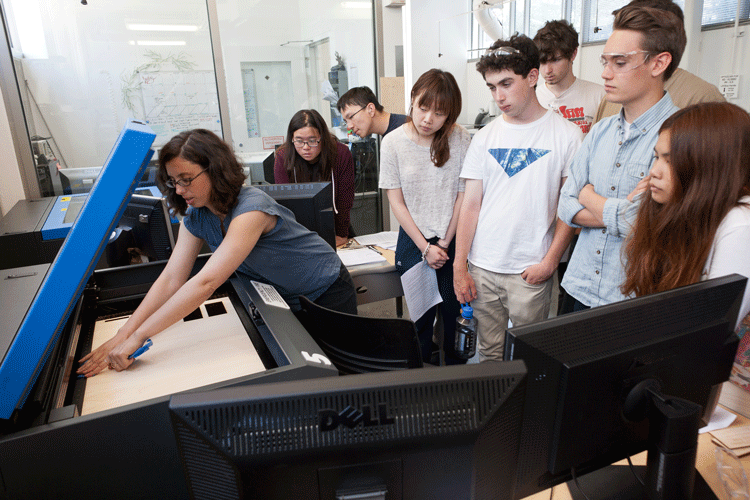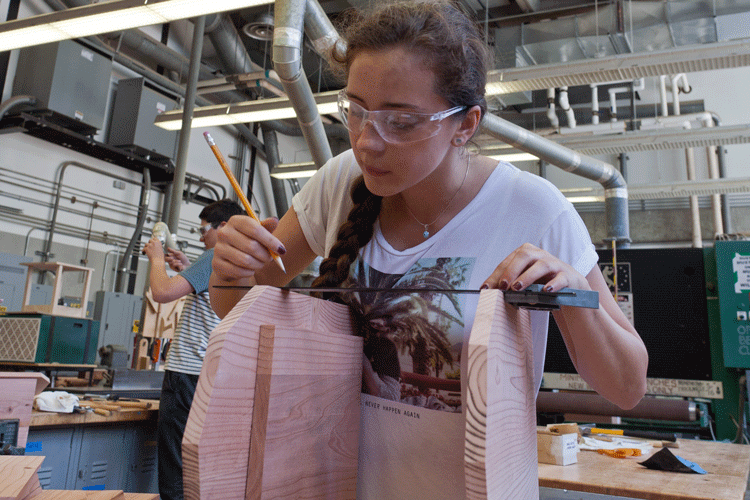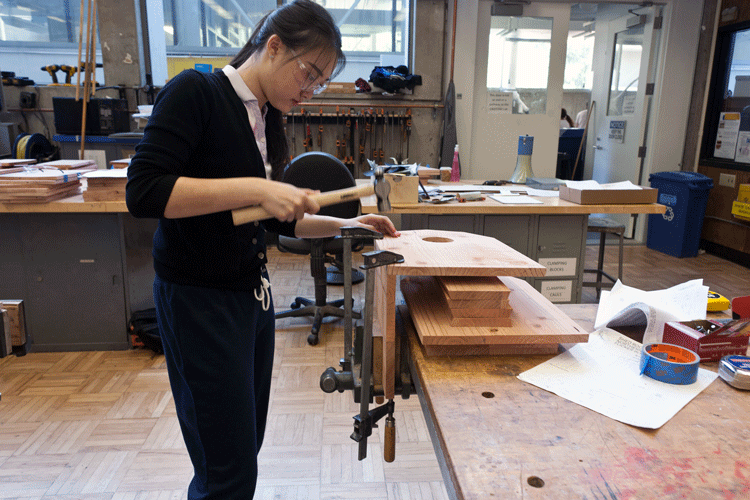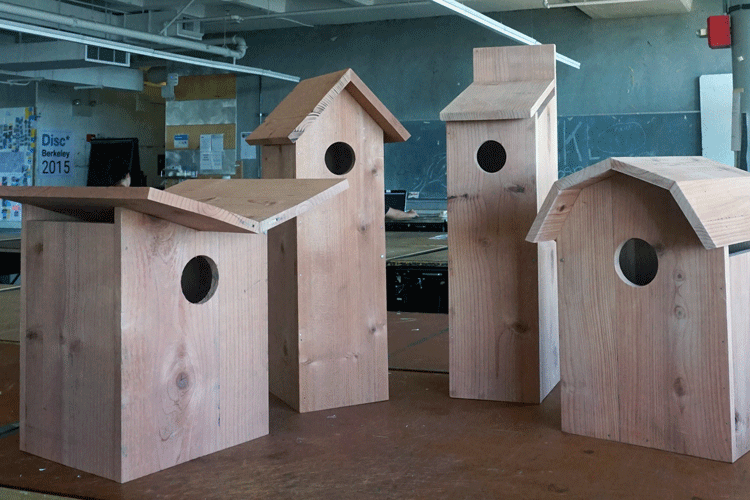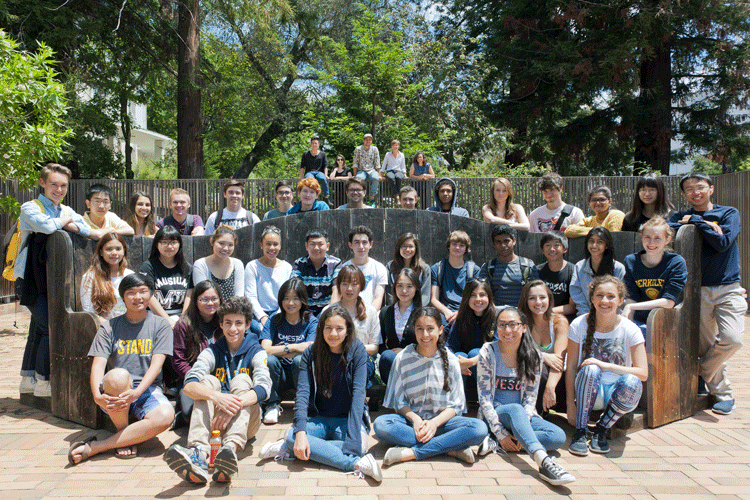Building better birdhouses
Students together at the College of Environmental Design to learn design and construction skills in a project to help birds nesting in the Bay Area.
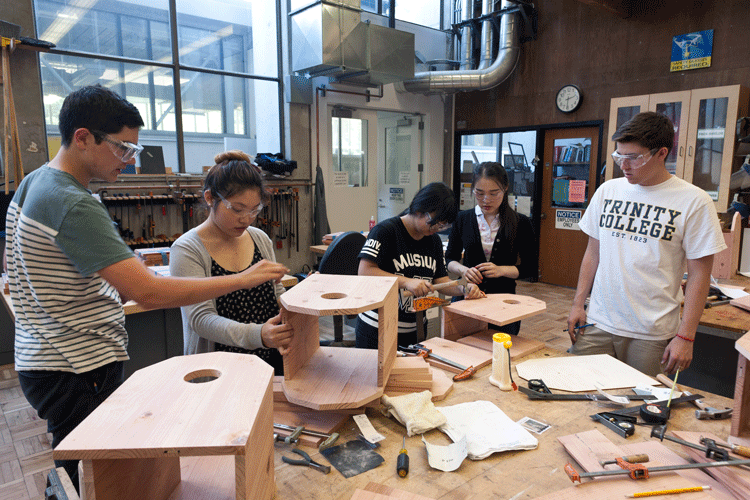
July 30, 2015
Sawdust, the smell of success.
As this year’s month long embARC Summer Design Academy at the University of California, Berkeley’s College of Environmental Design neared its end, the fabrication lab filled with the buzzing of band saws and drill presses, the tap-tapping of nail guns and the rhythmic scratch of sandpaper.
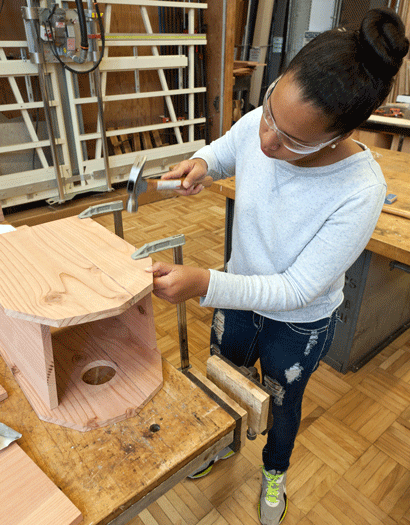
Taimaisu Ferrer Sin concentrates on the next steps of design and construction. (Photo by Tracy Bugni.)
Some 40 high school students, 21 girls and 19 boys ages 15 to 19, from the United States and 11 other countries worked their way from the design studio into a room full of tools many may never had heard of before. And they swooped enthusiastically into the worlds of landscape architecture, architecture, retail planning and design on behalf of an unusual client.
“They’ve been designing for a client,” acknowledged fabrication shop lead Elizabeth Thorp, “and that client happens to be a bird.” Well, two birds, actually.
The students – of whom only a handful said they had used hand tools before – have constructed 60 nesting boxes, or birdhouses. Their primary clients: the American kestrel, the smallest falcon in North America, whose numbers are declining everywhere but the deep South largely because of encroachment by increasing urbanization, and the Northern flicker, whose population is dwindling in the U.S. outside of California and Nevada.

The American kestrel is one of the birds to benefit from Berkeley’s summer builders.
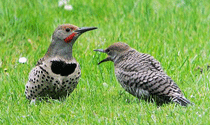
The Northern flicker is one of the birds targeted by Berkeley’s summer builders. (Bird photos by Wikimedia Commons.)
They also built exhibit nesting boxes suitable for wrens, chickadees, titmice, nut hatches, robins, swallows and more – basically all the California species living in urban and semi-urban areas.
‘What would we need if we were a bird?’
Taimaisú Ferrer Sin, 16, of Miami, Florida, and project partner 18-year-old Paola Perales, of Mexico City, said they enjoyed working and learning together. Perales said she knew the class wouldn’t be designing and building houses, not for people anyway, but was surprised when the avian assignment was announced.
“Then we asked each other, what would we need if we were a bird?” said Ferrer Sin.
As a result of “thinking outside of the box,” she added, they incorporated tiny steps and ventilation that weren’t part of the basic design formulas presented via the Cornell Lab of Ornithology’s NestWatch website. Other students diversified with different measures, such as adding different rooflines or substituting their own ventilation patterns.

Blake Garden will be the new home for many of the student designed and constructed nesting boxes.
The new nesting boxes, made of redwood and plywood, came about through a partnership between CED, the Golden Gate Audubon Society, Golden Gate Raptor Observatory and Blake Garden in nearby Kensington, which serves as a landscape design laboratory for CED.
Some boxes will be displayed from 1 to 2 p.m. on Friday (Aug. 31) at Blake Garden, the College of Environmental Design’s landscape laboratory, 70 Rincon Rd., in Kensington. Installation will take place this fall, with expert guidance from the Audubon Society. Meanwhile, 20 boxes designed for the American kestrel are being given to the Raptor Observatory, located near Hawk Hill in Marin County, where volunteers will monitor and record data about guests and residents.
“The main focus of this year’s nonprofit partnership was an attempt to replace the disappearing habitats of local native bird species by building nesting boxes that were not only well-designed structurally and aesthetically, but also built to the narrow specifications of each particular species of bird,” said Chrissie Bradley, manager of CED’s summer programs.
Right box for the right bird
“The students were educated by the Golden Gate Audubon Society about the irresponsibility of putting together any old style of birdhouse in any random area – which many well-meaning Bay Area bird lovers unfortunately do,” she said.
Observatory director Allen Fish brought in two specimens of kestrels, a male and a female, to give the students an up-close look at the colorful bird they are assisting.
Bradley said factors such as methods of mounting, the slope of a roof, entrance size, construction material and more must be considered to avoid hurting bird species and inadvertently providing habitat to non-native, invasive species in the area where the box is mounted. The wrong design or positioning of the nesting boxes can invite the wrong kind of birds, or squirrels, to the neighborhood.
Anthony DiCicco, the Golden Gate Audubon Society’s youth education director, said that after building and placing a nesting box, “citizen scientists” or others need to monitor it to determine what bird is calling it home and if it is being taken over by “little pirate birds.’”
“The motto is: Build the right box for the right bird,” he said.
Paul Mirocha, part of the fabrication shop staff and a self-avowed “bird nerd,” said it has been especially gratifying to see the students engage with designing, building and birding. “With some of them, you could see their eyes light up,” he said.

